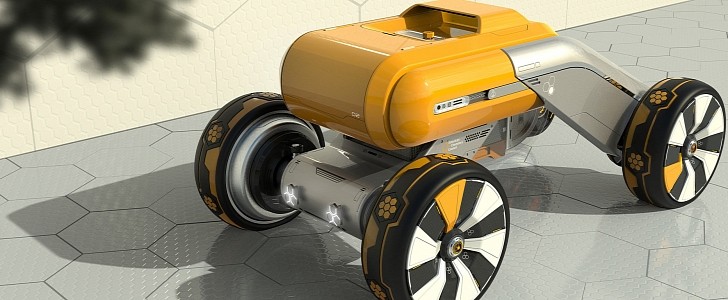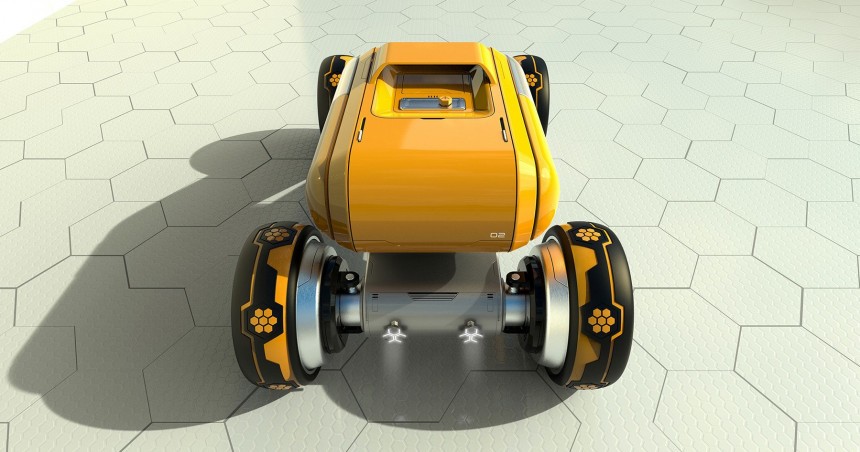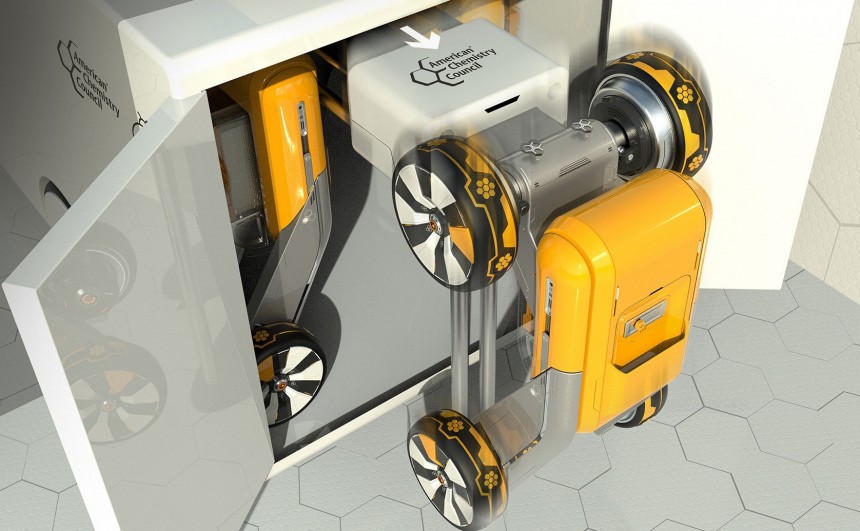By now, you should have understood the bee's role on this planet. Seeing how things are on a decline for the necessary pollinator, we're now exploring solutions to help our stinging companions survive. Such is the story of the Moving Beehive Mobility project.
Folks, it's not news that the bee or honeybee is on the decline. With countless diseases and increasing predators, it seems like we're walking a very thin line in keeping one of the world's most important pollinators alive and flourishing.
Well, it seems that some folks have started to take action, and as a result, we're starting to see all sorts of crazy and out-of-this-world ideas that may just become a reality very soon. One idea is from the mind of Seokbin Hong, an industrial and vehicle designer from Detroit, Michigan. With sponsorship from the American Chemistry Council, this is what this bright mind has come up with.
Now, the idea behind this project is rather simple: to create a safe and prosperity-inducing habitat for our buzzing friends. That's it. That's all you see when you take a look at the gallery. But in truth, there's much more to the story than meets the eye.
For example, each unit is composed of countless components aimed at the bee's well-being. While everything here is only conceptual, the ideas expressed by Hong really seem to work wonders for the pollinators. Again, just in theory, as this vehicle doesn't exist.
Let's start things off by pointing out that Hong included the ability to defend against hornets with this machine. At the top of the unit, a "liquid box" is in place to entice hornets away from the precious cargo this machine is carrying. What happens in that goop is anyone's guess, but I feel it's safe to say that it's probably the end for the intruders. Bees also have a separate entrance, specially designed only for their bodies, located on the underside of the unit.
As for where our buzzing friends will be hanging out, you can see artificial beehives at the rear of the vehicle, which are protected with a UV-resistant plastic cover. Don't worry, though, because this project is sponsored by the American Chemistry Council, the plastics used to make up this enclosure are "food grade." Another panel is placed over each beehive that monitors its state via an AI system. Because there's just so much going on with this machine, I beg you to check out the gallery to witness just how far into this design Mr. Hong went.
You may have noticed while looking at the renderings that most of this machine is built out of plastic. Again, it's because of the Chemistry Council's implications in all of this, and that alone should give you some idea of what one variation of our future may bring; a plastic-filled world. Nonetheless, by 2035, the year this system is projected for, plastics will most likely be handled differently than they are today. At least, I hope they will.
A little more on this design, it's important to note that it is an electric vehicle and one that even includes a tad of modularity in its functionality. To keep the air nice and clean, Hong devised this mobile beehive to be electric, and this also makes it suitable for an array of settings. From fields of crops to flower-filled meadows and city parks, all are places where we could see this contraption.
As for the modularity aspect, once bees have been hard at work during the day, these units will simply return to their headquarters, where they are to be stored in a verticle position, helping keep spaces uncluttered and neatly arranged. The next day, one by one, these EVs embark upon another journey, ensuring that our future generations have the benefit of knowing what a cherry looks like, how it feels, and what it tastes like.
At the end of the day, the importance of the bee is something we're still grasping. Hopefully, it doesn't turn out to be one of those "you don't know what you have until it's gone" moments because if it does, we may very well be walking around fields with cotton swabs, moving pollen from plant to plant. What, that's how you pollinate by hand.
Well, it seems that some folks have started to take action, and as a result, we're starting to see all sorts of crazy and out-of-this-world ideas that may just become a reality very soon. One idea is from the mind of Seokbin Hong, an industrial and vehicle designer from Detroit, Michigan. With sponsorship from the American Chemistry Council, this is what this bright mind has come up with.
Now, the idea behind this project is rather simple: to create a safe and prosperity-inducing habitat for our buzzing friends. That's it. That's all you see when you take a look at the gallery. But in truth, there's much more to the story than meets the eye.
For example, each unit is composed of countless components aimed at the bee's well-being. While everything here is only conceptual, the ideas expressed by Hong really seem to work wonders for the pollinators. Again, just in theory, as this vehicle doesn't exist.
As for where our buzzing friends will be hanging out, you can see artificial beehives at the rear of the vehicle, which are protected with a UV-resistant plastic cover. Don't worry, though, because this project is sponsored by the American Chemistry Council, the plastics used to make up this enclosure are "food grade." Another panel is placed over each beehive that monitors its state via an AI system. Because there's just so much going on with this machine, I beg you to check out the gallery to witness just how far into this design Mr. Hong went.
You may have noticed while looking at the renderings that most of this machine is built out of plastic. Again, it's because of the Chemistry Council's implications in all of this, and that alone should give you some idea of what one variation of our future may bring; a plastic-filled world. Nonetheless, by 2035, the year this system is projected for, plastics will most likely be handled differently than they are today. At least, I hope they will.
As for the modularity aspect, once bees have been hard at work during the day, these units will simply return to their headquarters, where they are to be stored in a verticle position, helping keep spaces uncluttered and neatly arranged. The next day, one by one, these EVs embark upon another journey, ensuring that our future generations have the benefit of knowing what a cherry looks like, how it feels, and what it tastes like.
At the end of the day, the importance of the bee is something we're still grasping. Hopefully, it doesn't turn out to be one of those "you don't know what you have until it's gone" moments because if it does, we may very well be walking around fields with cotton swabs, moving pollen from plant to plant. What, that's how you pollinate by hand.















